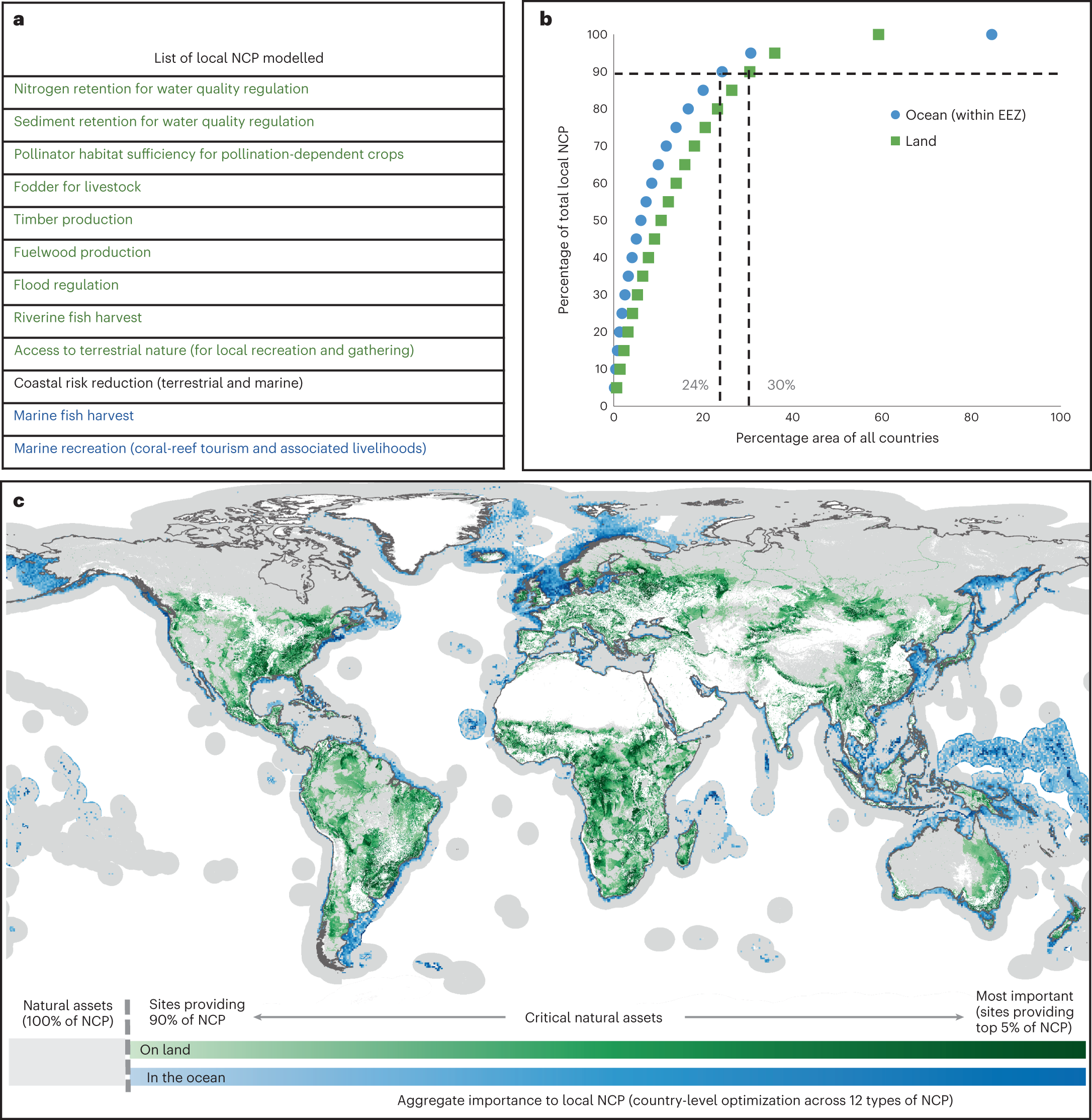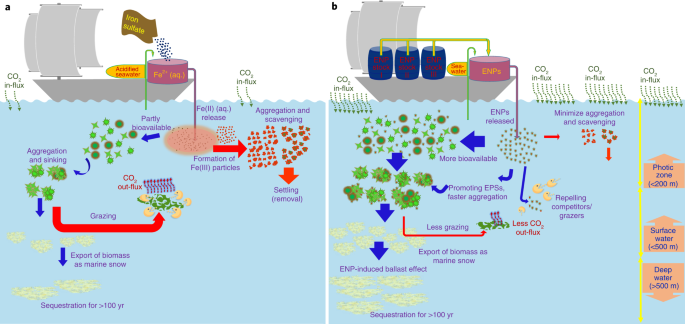わずかな割合の土地と沿岸海域を維持・保全することで、世界人口の大部分に対して、人間への自然貢献の90%近くを確保することができます。Maintaining and conserving a small percentage of land and coastal waters can secure nearly 90 percent of nature’s contributions to people for most of global population
2022-11-29 ペンシルベニア州立大学(PennState)
研究チームは、自然から人々への貢献(NCP)を構成する12種類のローカルスケールと2種類のグローバルスケールの生態系サービスに焦点を当てました。これらのサービスは、食料、飲料水、危険からの保護、その他多くの恩恵を人類に与えることで、莫大な文化的・経済的価値を有しています。
「ペンシルバニア州立大学のラリー・ゴレンフロ教授(造園学、地理学、アフリカ研究)は、「我々の包括的な研究は、地球上の比較的小さな割合が、維持・保全のために不釣り合いに重要であることを示しています。「地球上には、毎日多かれ少なかれ22万人の人々が暮らしています。私たちは大量に天然資源を採取しており、場合によっては、きれいな水や空気などの恩恵をもたらす重要な生態系サービスが、自然のプロセスによって補充されるよりも急速に損なわれているのです」と述べています。この論文は、特にいくつかの場所は、一般的な人間の福利のために維持することが本当に重要であることを示しています。”
研究者たちは、衛星データを使って、南極大陸を除くすべての大陸の陸上生態系と内陸・海洋水域によって提供される14のNCPすべてを地図化しました。彼らは、生態系が提供するサービスの恩恵の大きさと、可能であれば、その恩恵を受けている人々の数を各NCPに帰属させた。彼らは、1.25マイル(2キロメートル)の解像度でデータを再サンプリングし、最適化モデルを実行して、すべてのNCPの目標レベルに達するために必要な最小面積を特定した。ローカルNCPでは各国の陸地と海洋排他的経済水域(EEZ)内で、グローバルNCPでは全世界の陸地と各国のEEZ内でモデルを実行しました。
その結果、地球上の陸地の30%と沿岸水域の24%を保全することで、各国の人々に対する現在の自然貢献の約90%が維持されることが判明しました。研究成果は、『Nature Ecology and Evolution』誌に報告された。
<関連情報>
- https://www.psu.edu/news/research/story/small-percentage-globe-provides-critical-natural-benefits-most-humanity/
- https://www.nature.com/articles/s41559-022-01934-5
地球上の重要な自然資源を地図化。Mapping the planet’s critical natural assets
Rebecca Chaplin-Kramer, Rachel A. Neugarten, Richard P. Sharp, Pamela M. Collins, Stephen Polasky, David Hole, Richard Schuster, Matthew Strimas-Mackey, Mark Mulligan, Carter Brandon, Sandra Diaz, Etienne Fluet-Chouinard, L. J. Gorenflo, Justin A. Johnson, Christina M. Kennedy, Patrick W. Keys, Kate Longley-Wood, Peter B. McIntyre, Monica Noon, Unai Pascual, Catherine Reidy Liermann, Patrick R. Roehrdanz, Guido Schmidt-Traub, M. Rebecca Shaw, …Reg A. Watson
Nature Ecology & Evolution (2022) Published: 28 November 2022

Abstract
Sustaining the organisms, ecosystems and processes that underpin human wellbeing is necessary to achieve sustainable development. Here we define critical natural assets as the natural and semi-natural ecosystems that provide 90% of the total current magnitude of 14 types of nature’s contributions to people (NCP), and we map the global locations of these critical natural assets at 2 km resolution. Critical natural assets for maintaining local-scale NCP (12 of the 14 NCP) account for 30% of total global land area and 24% of national territorial waters, while 44% of land area is required to also maintain two global-scale NCP (carbon storage and moisture recycling). These areas overlap substantially with cultural diversity (areas containing 96% of global languages) and biodiversity (covering area requirements for 73% of birds and 66% of mammals). At least 87% of the world’s population live in the areas benefitting from critical natural assets for local-scale NCP, while only 16% live on the lands containing these assets. Many of the NCP mapped here are left out of international agreements focused on conserving species or mitigating climate change, yet this analysis shows that explicitly prioritizing critical natural assets and the NCP they provide could simultaneously advance development, climate and conservation goals.



